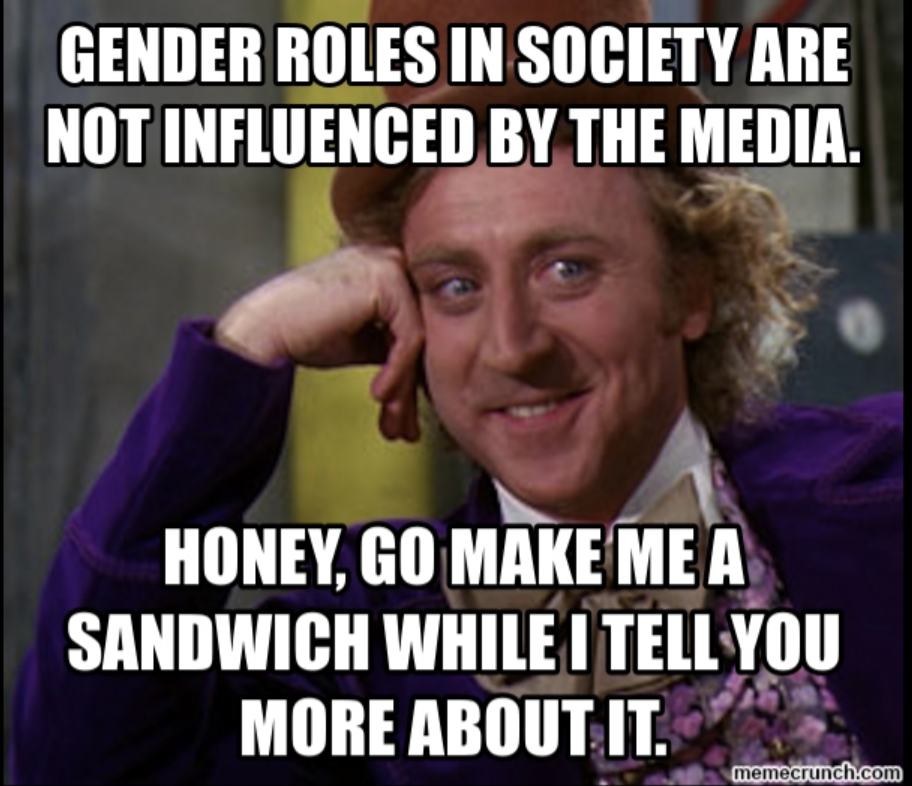“Women should shave their legs”, “Women belong in the kitchen”, “Women should dress modestly”- Women are exposed to such astute observations regularly making sexism a part of mainstream society. And internet memes have provided a platform for individuals who believe in these ideas.
Gender stereotyping has long been popular among the general public, and internet memes, in particular, serve as a catalyst for targeting and trolling people. Despite some progress, sexist and misogynist ideas continue to degrade individuals who do not conform to societal norms, and memes act as vehicles for transmitting their ideas, beliefs, and ideologies.
In present times, the internet has become a place for distinct forms of harassment, which is often directed towards the marginalized or suppressed sections of society, especially women, transgender people, and homosexuals. It has been argued that sexist humour is an example of symbolic violence and can serve to subjugate women (Bemiller & Schneider, 2010). Feminist researchers have demonstrated that incidents of online sexism and harassment are expressed as “acceptable” by society as a form of humour and satire (Jessica Drakett, et al.,2018).
Gender Memes
To find out how humour and satire are used to disseminate untrue, and sometimes misleading ideas and beliefs I will analyze a few memes.
As Shakespeare wrote, “All the world’s a stage, and all the men and women merely players.” The meme-makers have taken it too seriously. For them, cyberspace has become the new age theatre, where different spectators perceive acts and performances differently. Memes have become a popular way of promoting regressive and progressive things about women, transgender people, and homosexual people. The samples try to examine the different types of memes that try to wonder about the gender disparity, misogyny, and patriarchy that exist in our society. The material was culled from popular Facebook and Instagram pages with hundreds to thousands of followers. Various aspects uncovered from the pages are misogyny, patriarchy, victim-blaming, gender bias, and gender stereotyping.
Sample 1
This meme was coded to depict how women’s looks demonstrate acceptance by men. The female capability is valued by beauty and appearance, with a focus on physical appearance or look. When physical appearance or an idealized body is described, a woman is reduced to a sex object, and the pressure to conform to a certain beauty standard creates an innate pressure on them. This pressure has psychological effects, such as eating disorders, low self-esteem, depression, etc. Thus, the social construct of women’s physical attractiveness is still a heteronormative belief that most women strive to achieve and maintain by taking extreme measures, which is a problem in itself. By raising awareness, providing education, busting beauty myths, embracing women of all sizes, colours, and shapes, and normalising body hair in women, one can shift the focus of such thought processes.
The meme has been extracted from a Facebook page, which had 110.6K followers on the date of retrieval, and the post got 2.1K likes.
Sample 2
Although the picture glorifies motherhood, the problem with this picture is that women should be responsible for the majority of the cleaning, cooking, grocery shopping, and child-rearing, even if the woman has a full-time job or makes more money than her partner. Gender role stereotyping has become so common that it has put enormous pressure on women to be good housewives and perform household tasks that are only assigned to them. Unpaid housework and women’s inequality in the workplace has become the norm these days. Men should step up and share the chores rather than requiring or expecting women to bear the entire burden of the house.
The meme has been extracted from an Instagram page, that had 100k followers on the date of retrieval, and the post got 3,500 likes.
Sample 3
This meme depicts sexist allegations against the female victim for wearing provocative clothes. Since the woman was wearing body-revealing clothes, it is assumed that she tried seducing the onlookers. Also, it shows how women are always blamed for the wrongful acts done to them, which needs to be changed. Victim blaming and shaming must stop, as it’s not the attire of the victim but the onlooker’s mindset.
The meme has been extracted from a Facebook page, which had 386.08K followers on the date of retrieval, and the post got 1.5K likes.
Concluding Remarks
Memes are a popular medium to propagate information humorously. Memes are no longer a neutral commodity to be consumed; instead, they are capable of provoking thoughts with a veiled meaning. By analyzing this meme set, I learned how patriarchy, gender stereotypes, and misogyny still prevail in our society. The domination and suppression of a particular gender exist in almost every human area of existence, which needs to stop.
One way of tackling misogyny is by spreading awareness to address it. For example, in an organization, mandatory training should be given to employees about the preconceived notions they hold about women and changing their attitudes toward them. In schools, this topic needs to be taught consistently from a young age.
Secondly, the decision-makers should introduce policies which provide a safe space to call out such behaviours. There are many ways of tackling the problem, but we need everyone in society to play their part because misogyny cannot be tackled on its own.
Note: This article also considers ethics related to data collection. All the memes have been collected directly from their source pages and do not claim any right of ownership of memes by the author. Also, the purpose of the study is to analyze such content and is not aimed at targeting any specific individual, community or group.




